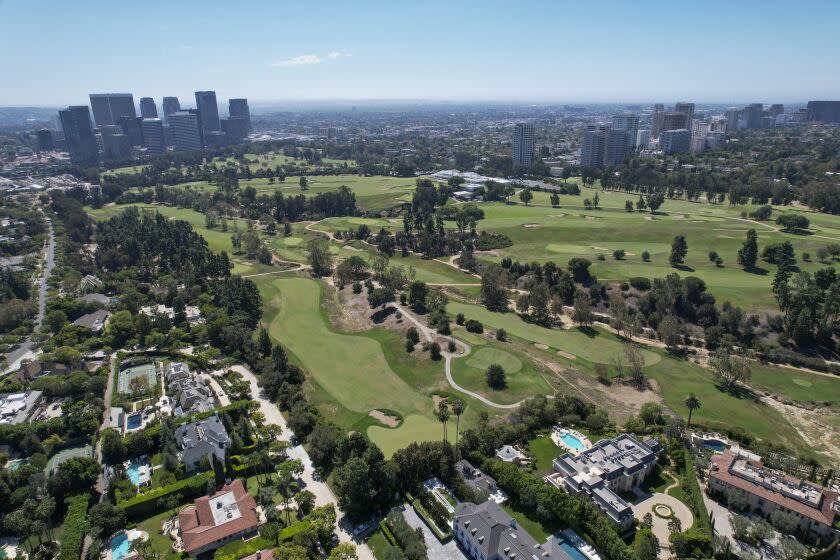
Tinseltown loves big reveals, and that’s what the US Open has at the Los Angeles Country Club, the biggest course people have ever seen.
The club will host its first major championship next week – the first time the US Open has been held in this city in 75 years – and it will be a revelation for the golfing world.
Countless Angelenos have no idea where LACC is, let alone how phenomenal the place looks.
Many competitors have never played the legendary North Course, including 2018 Masters champion Patrick Reed, who has run the holes with his team several times over the past week, gathering as much information as he can.
“It’s like an unveiling,” said Gene Sykes, president of the club, bisected by Wilshire Boulevard between Beverly Hills and Westwood. “A lot of golfers know about it or have heard of it, but have never been there. It’s legendary in some ways.
Now, myth meets reality when the club opens its doors to the world’s best golfers and tens of thousands of spectators. The first fairway is lined with two-storey company chalets, and there are the traditional, gigantic white tents for the merchandise center and the media, but there are relatively few grandstands. The goal was to keep the course as uncluttered and unaltered as possible.
In a time of change and upheaval, with the announcement of a merger between the PGA Tour and LIV Golf, LACC should provide all parties with some unanimity: The North Course is a masterpiece.
However, as with all US Opens, there are changes to the course that make it even more difficult.
The first tee, for example, was moved to the practice green in front of the clubhouse to lengthen the par-five hole.
The opening tee shot is above colorful rows of roses, a nod to George C. Thomas, who designed the north course, which opened in 1921. Course architect Gil Hanse restored this design in 2010.
“George Thomas was a rosary, and his passion was growing hybrid roses,” said John Chulick, who co-chairs the club’s US Open committee with Dick Shortz. “After designing his courses here – Bel Air, Riviera, us – he basically retired and devoted the rest of his life to growing roses.”

The course has several unusual aspects, measured at 7,421 yards for this major championship, including five par three holes which, depending on pin placement, range from 300 yards to the 78-yard 15th, which will be the shortest hole in the US Open. history.
Although there aren’t many grandstands on the course, there is one in a prime position behind the 623-yard 14th hole, ideally placed for fans to watch the players dare to take to this tricky two-sided green.
Those seats are also a prime advantage for the action on this ultra-short 15th, where the challenge of putting a tee shot near the pin is like dropping a lob wedge into a chimney.
At the 2013 Pac-12 Championships, Cal’s Max Homa of Valencia set a course record of 61 in the LACC, a formidable feat, even though pin placement became much more difficult after that opening day. He is now seventh in the world golf rankings.
Patrick Cantlay, who played at UCLA, is ranked fourth and knows the North Course well. He should, he’s next door to his alma mater.
“I’ve probably played it a couple dozen times,” Cantlay said. “It’s a golf course on which I have played a lot. I saw that – I played it in December and saw that the USGA was going to set it up quite differently than how it plays week to week for members. … I’ve heard guys say they think it’s going to play out really easy. I don’t think that will be the case.
Like the club itself, others will be revealed.
This story originally appeared in the Los Angeles Times.
